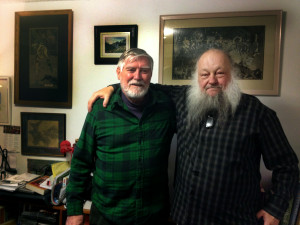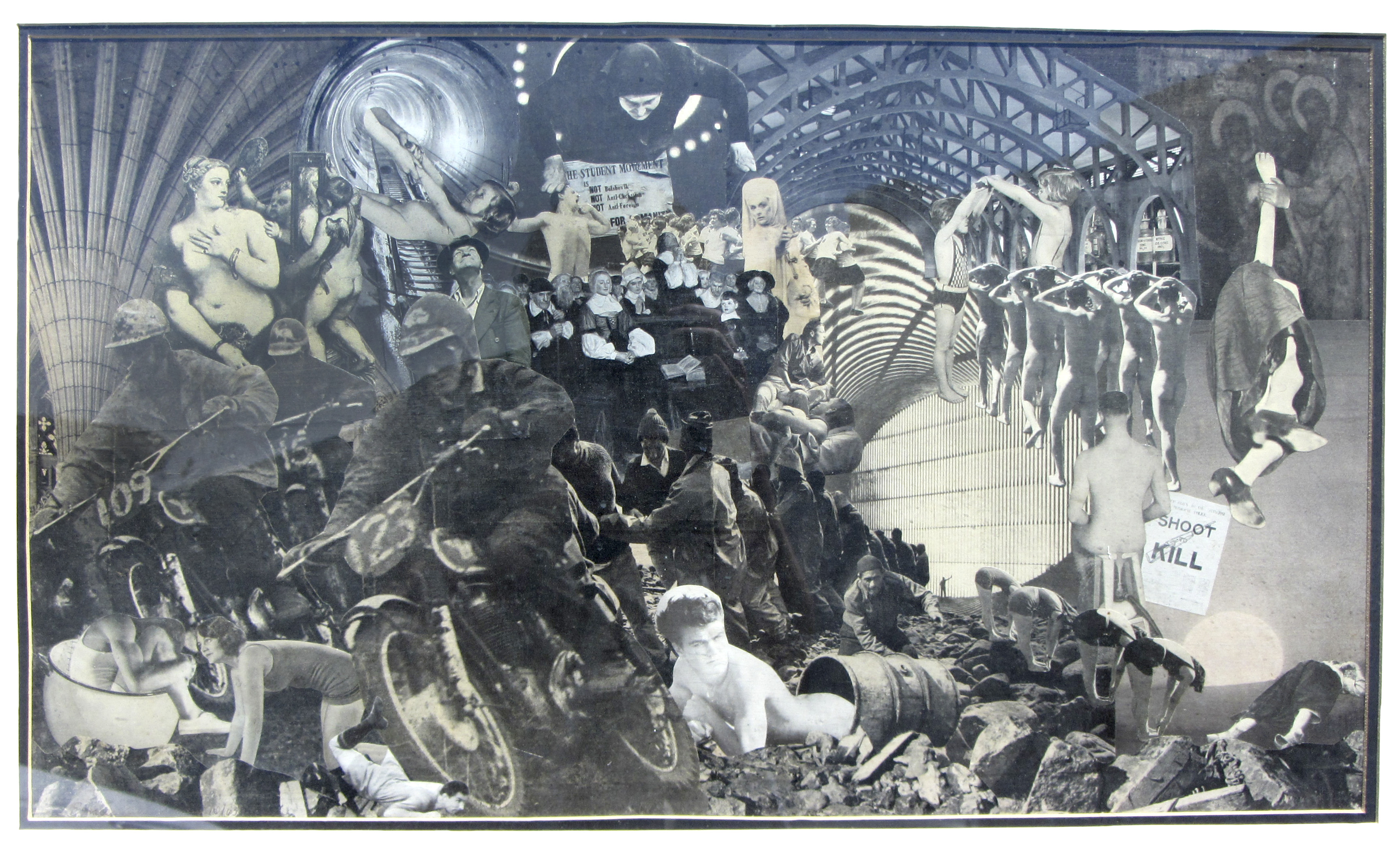Still in his twenties, Salt Lake City resident Ernesto Edwards made several trips to San Francisco and found his passion.
In the city’s Mission District, the Berkeley Renaissance, one of the most vibrant offshoots of the Beat Movement, was gaining creative speed. Edwards, who had studied architecture at The University of Utah, met Robert Duncan, a poet whose work only recently has regained major interest, and many other writers and artists. However, an exhibition at the San Francisco Museum of Art had drawn Edwards’ greatest interest toward the work of Jess (who had long before changed his name from Burgess Collins), an artist then in his late 30s whose paste-ups and collages were highly praised and recognized.

Recently, the fruits of the Berkeley Renaissance have become highly visible in a rapidly growing stream of new book releases and gallery shows, most notably an award-winning traveling exhibition, organized by Sacramento’s Crocker Art Museum.

The exhibition is notable on several levels. Four other pieces by Edwards, including one of his earliest works as well as one comprising six panels, are part of the national show ‘An Opening of the Field: Jess, Robert Duncan, and Their Circle,’ which will have stops in New York City and Washington D.C. before returning to California. The show recently received a Best Show award for excellence from the International Association of Art Critics-USA.
Christopher Wagstaff, one of the guest curators, wrote in the accompanying exhibition book, published by Pomegranate Press in Portland, Oregon, that Edwards’ pieces represent “some of the most visually engaging and appealing works produced in this period.”

In the 1960s, his work, most of which is now in private collections, was first featured in San Francisco’s Buzz Gallery, one of the most important early venues for Bay Area artists. He also was featured in various in-home exhibitions as well as the Mostly Flowers gallery in a downtown airport bus terminal in San Francisco. The pieces range in size from 9 inches x 15 inches (‘Who Knows Which Who Cares’) to 32 inches by 18 inches (‘The Original Sin’). The works cumulatively reveal an incredibly deft hand of synthesized composition, remarkably so as they pull together many seemingly disparate elements. Simply put, Edwards was as natural as possible in the collage art form, keenly representing his own experiences in the countless interactions he had during the Berkeley Renaissance.

He recently donated an impressive collection of materials to the special collections division of Utah State University’s Merrill-Cazier Library, which has an extensive archive of Beat Movement materials from artists and writers. “Ernesto’s collection is important to us because it adds primary source material to our fabulous Beat Poetry Little Magazine collection,” Bradford Cole, associate dean for special collections and archives at USU, says. “There are also three of Ernesto’s collages and numerous photographs from San Francisco in the 1950s.”

Other pieces are just as rare. Two of Michael McClure’s “word sculpture” projects created in the mid-1960s, are examples. The first of these projects, Dream Table, was published in an edition of 200 by Dave Haselwood in 1965. “This work consists of 30 small cards, each just 3.5 inches tall and 2.5 inches wide, with single words printed on each,” Schockmel says, adding the other project – and most noteworthy – was McClure’s 1966 collaboration with artist Bruce Conner:
“Known as LOBE | KEY | STILLED | LIONMAN | LACED | WINGED |APRIL | RAPHAEL | DANCE | WIRY – the ‘sculpture’ consists of a group of 25 cards, one word printed at each of the four edges. The flip side of each card features a different mandala drawing by Bruce Conner. A very limited edition – probably fewer than 50 were produced.”

The collection includes many materials spanning more than three decades up until when Edwards returned to SLC in the 2000s after his mother died. These materials, “along with numerous gallery, theatre, and symposium flyers, post cards, and invitations chronicle a community of artists and writers living in San Francisco’s rich arts community,” Schockmel adds.
There are additional significant archival materials for art historians and scholars. “As executor of Black Mountain trained artist, Tom Field, the archive of Mr. Edwards’ working materials for the 1996 Exhibition at 871 Fine Art’s exhibition, Tom Field: Paintings from Black Mountain College and the Beat Era, is instructive,” she says. Edwards has donated every small detail expected in exhibition preparation of Field’s work, “including photos, slides of the artist and his paintings along with background materials including essays from Robin Blaser and Bill Berkson on Field.” The archives include a transcript of an interview between Tom Field and Kevin Killian, which was conducted at Edwards’ home in the late 1970s.
Interest has flourished for learning more about the work of the Berkeley Renaissance. While the national exhibition has restored a widespread prominence that Jess enjoyed during his life, Wagstaff and Michael Duncan’s catalogue has extensively documented the work of Edwards and other artists who previously had received little attention, even among art critics.
Similarly, Robert Duncan’s works also have enjoyed a fresh wave of visibility. The University of California has published his collected writings in four volumes. Wagstaff’s ‘A Poet’s Mind: Collected Interviews with Robert Duncan, 1960-1985’ received the 2013 PEN/USA Literary Award. Lisa Jarnot’s biography titled ‘Robert Duncan, The Ambassador from Venus’ is considered a definitive treatment. The Crocker show also has brought tremendous interest in Duncan’s work.
In Jess’ work, as described by Wagstaff, “collages became intricate fields of clotted and amalgamated images that convey what he called ‘a network of stories.’” Wagstaff added, “they are visual translations of fiction’s narrative spell.” Jess would collaborate with Duncan on projects such as the highly appraised ‘Scrapbook for Patricia Jordan,’ which is available online by the Archives of American Art.
For more information, see here.

